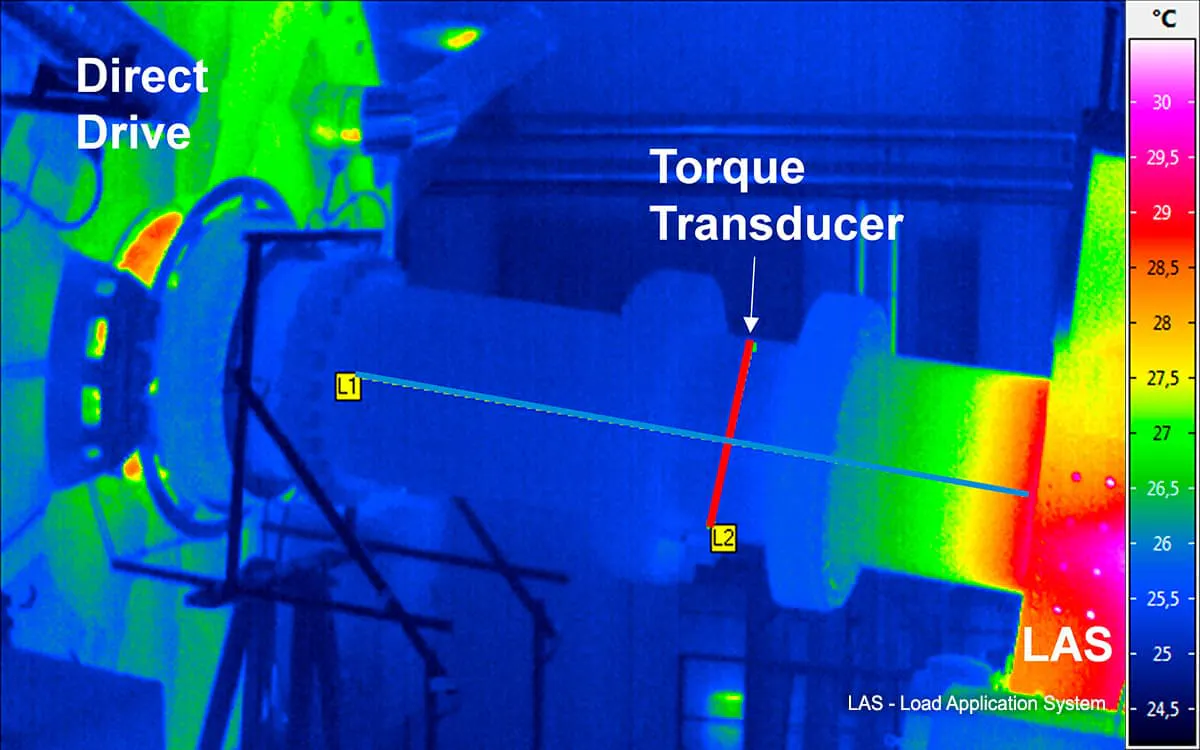
Case Study: Precise MN·m Torque Measurement in Wind Turbine Test Benches
This development is associated directly with an increasing demand to test the product reliability, functionality and life durability of wind turbine subsystems like the drive train. To achieve feasible system test results, it is necessary to measure MN∙m (Meganewton meter) torque, one of the most important state variables of nacelle operation, traceably and with high precision according to national metrology institutes (NMI) standards. At the moment the torque measurement accuracy in the existing nacelle test benches lies in the range of 5 % referred to measured value and does not fulfil the requirements of NMIs and should be enhanced. To reduce the torque measurement uncertainty, it is important to identify and to quantify the specific influences on MN∙m torque measurement. Scientists at the Center for Wind Power Drives (CWD) of RWTH Aachen University are focusing on this task.
Influences on the MN∙m Torque Measurement
Besides rotational speed, the torque is one of the most important measurement parameters during the wind turbine test bench operation. A precise torque measurement is crucial for the quantification of the input power and the efficiency of subsystems (e.g. main bearing, gearbox and generator) and the entire drive train of the wind turbine. Furthermore, the measured torque is used for the investigation of the impact of the critical operation modes, such as start-up or emergency shut-down, on the local loads and the behavior of the entire system. In this way the torque measurement accuracy defines the result quality of the investigations on the wind turbine test bench. Temperature counts among the ambient parameters, which have a crucial impact on the torque measurement. However, its influence is not investigated adequately for the wind turbine test benches at the moment.